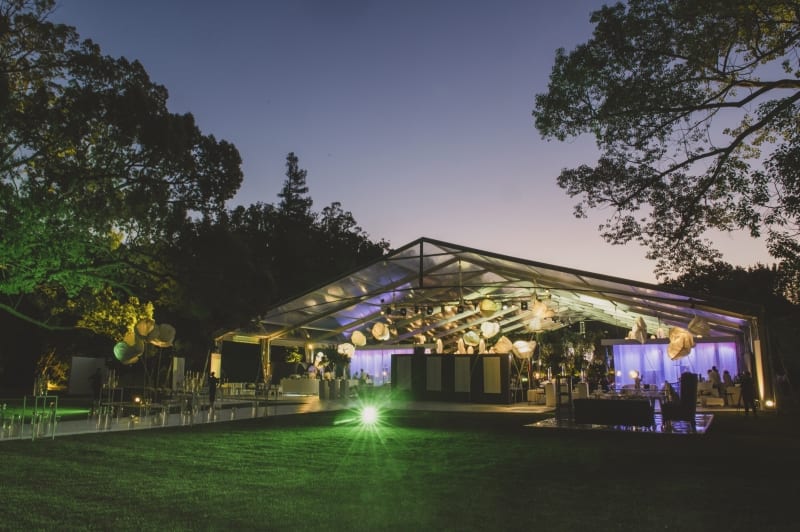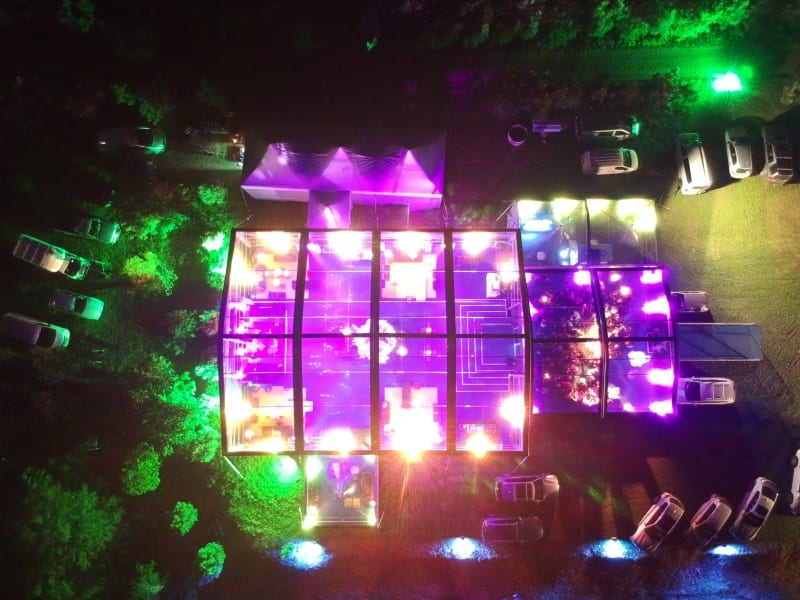It is of paramount importance that all temporary structures utilised by the public are safe, particularly in respect of fire or poor weather. Moreover, procedures must be implemented that conform with international best practice, says Richard Downing.
Priority should be given to selecting contractors that demonstrate competence and provide evidence of their commitment to safety before, during and after an event. A risk assessment is a vital part of project planning and should be performed for every event. This should include a survey of sitespecific conditions such as vehicle access, ground conditions, and overhead or underground hazards such as trees, power lines, water pipes and electrical cables. This will determine the type of equipment and methods used to ensure safe installation and structural stability.
The design and suitability of a temporary structure must be verified by a qualified structural engineer, while membranes and fabrics should be inherently or durably flame-retardant.
“A risk assessment is a vital part of project planning and should be performed for every event. This should include a survey of sitespecific conditions such as vehicle access, ground conditions, and overhead or underground hazards such as trees, power lines, water pipes and electrical cables.”

Stable structures
Proper anchoring is crucial to stability and safety. Effectiveness is determined by the type of soil, water penetration, as well as the type, depth and inclination of the anchor. Pull-out tests must be performed to verify the anchorage resistances in granular soils. The location of any underground services must also be clearly marked before any earth anchors are installed.
Where ground-penetrating anchors cannot be deployed, heavy concrete ballast weights should be used to resist uplift forces – these requirements should not be underestimated, and could be as much as several tonnes per anchor point. Wall and roof bracing is an important part of most frame structures and should typically be installed in each end bay. Large structures require more cross bracing with a maximum of six bays without bracing. Roof panels should also be sufficiently tensioned to avoid water ponding.
Event organisers should be made aware of the temporary structure’s design wind load and obtain detailed instructions regarding evacuation should conditions approach this threshold. A wind monitoring and action plan should be developed. The contractor should propose to the event organiser what standby maintenance will be required once the structure is handed over – all based on a risk assessment. If the sides are left open, the contractor should provide for a standby team to continuously assess wind conditions and close the sides if necessary.
The contractor must ensure the event organiser is aware of the minimum requirements for fire extinguishers and emergency exits, and emergency lighting should be provided to illuminate the emergency exits at larger events.

Best practice
The following best practice should also be observed when using a temporary structure:
- Larger events and structures warrant the presence of a qualified medic on-site during the erection and removal of the structures.
- All machinery (e.g. forklifts, boom lifts, cranes) must be operated by licensed, skilled persons.
- Grass and vegetation within the footprint of and immediately around the structure should be cut and cleared prior to installation.
- The area underneath raised platforms should not be used for storage or see rubbish accumulate.
- No combustible liquids, gases, aerosols, explosives or fireworks should be stored in the structure.
- Emergency exits and pathways should always be kept free from obstruction.
- Exit doors should always open outwards and not be lockedwhen any person is in the temporary structure.
- Event organisers must keep in mind that when the structure has been handed over, it is vital that no modifications are made to the structure – in particular structural components such anchoring or the cross bracing in end bays – or the number and position of fire extinguishers and exits. These changes can only be made by the contractor upon the approval of a structural engineer.
- Persons other than the contractor’s (or supervised) staff should not enter a temporary structure during assembly or disassembling operations, until deemed structurally complete and safe.
- The contractor should provide the organiser with relevant emergency telephone numbers.
- The organiser is required to obtain necessary authorisation and approval from the local authority for the erection of the temporary structure.




